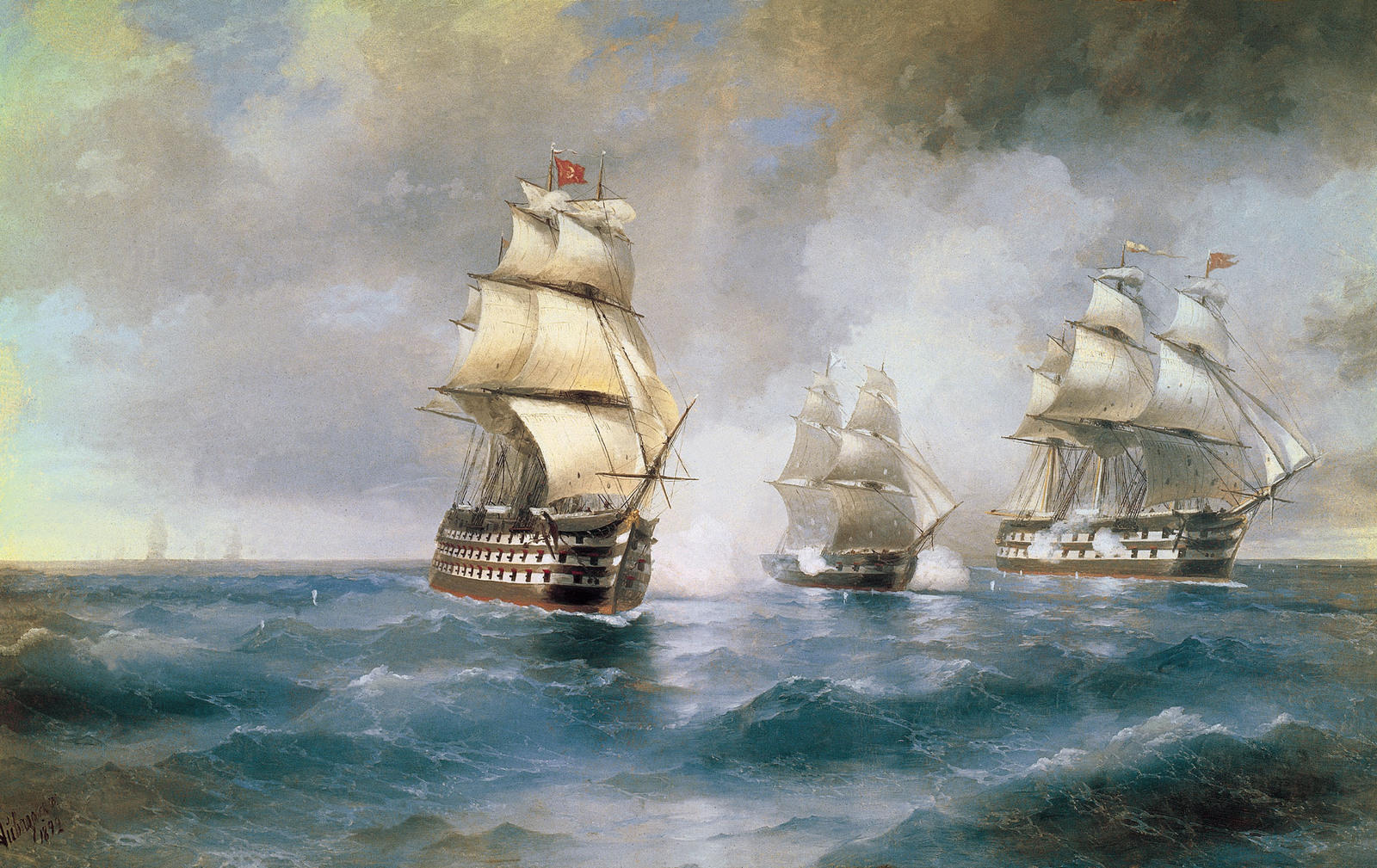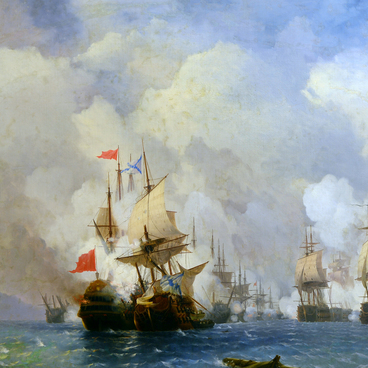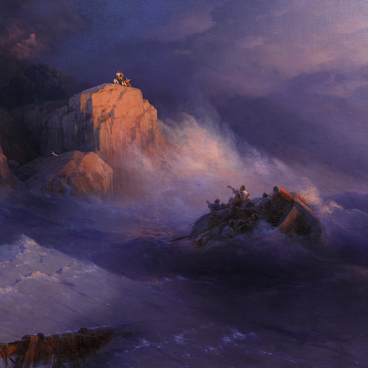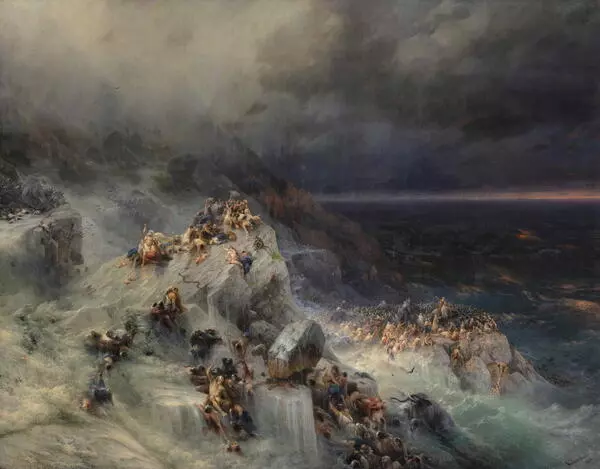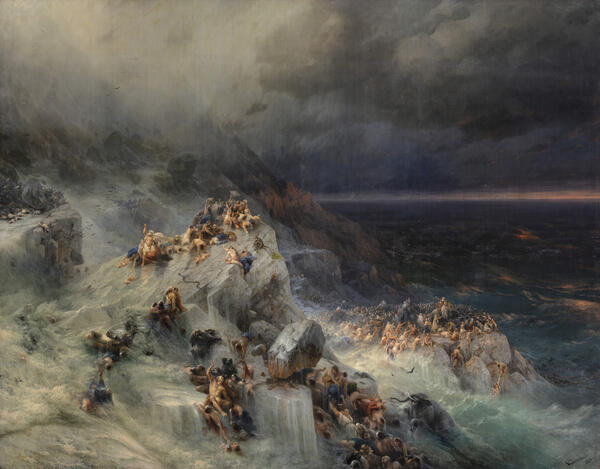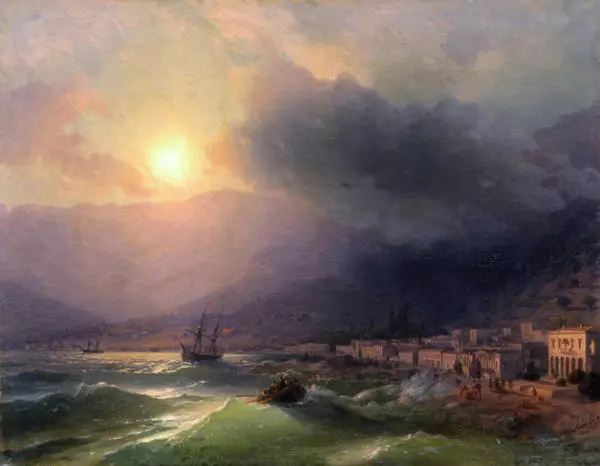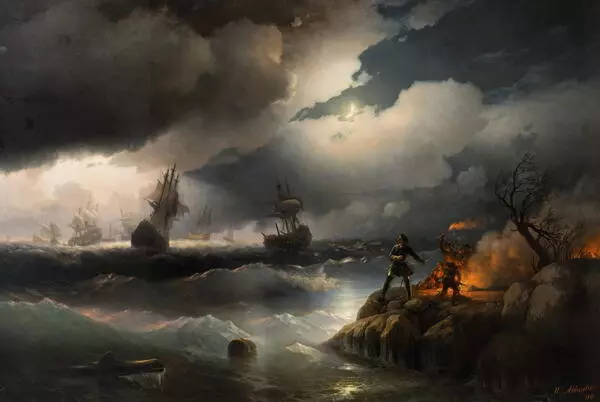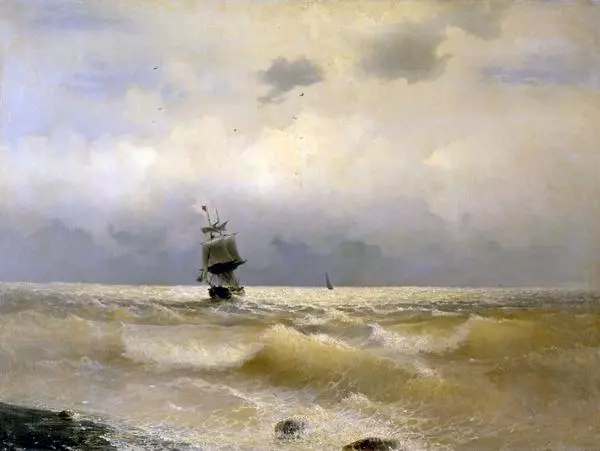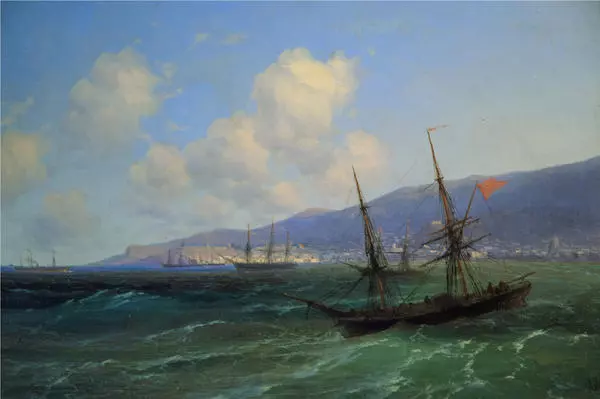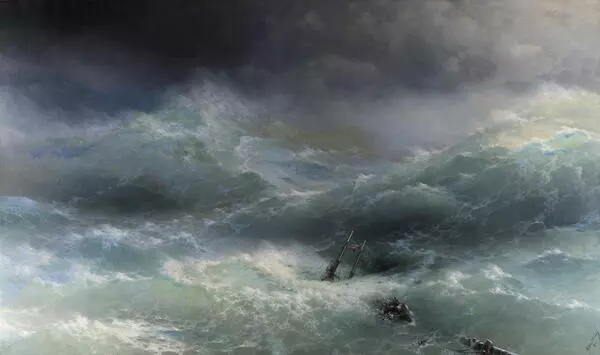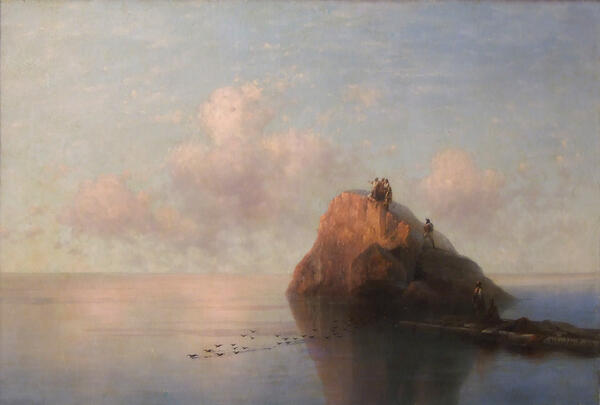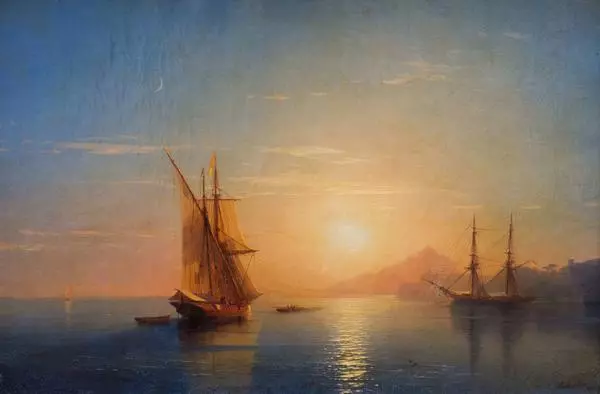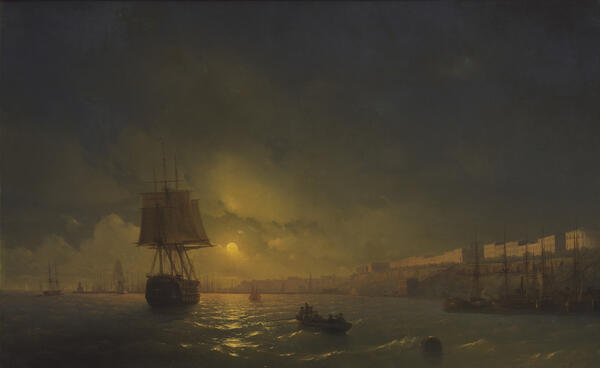Since his childhood, Ivan Aivazovsky was fascinated by warships calling at the port of Feodosia. The naval Battle of Navarino fought in 1827 may well be described as one of the most dramatic events that deeply impressed the then 10-year-old Aivazovsky. The heroic feat of the brig Mercury who won the battle with two large Turkish ships passed into legend.
It was a key moment in the Greek War of Independence against the Turkish tyranny.
Deeply sympathizing with the liberation movement, Aivazovsky could not but reflect it in his artwork. In his mature years, the artist confessed that lithographs and prints depicting deeds of the heroes fighting with the Turks at the turn of the twenties for the liberation of Greece were the first pictures that kindled his passion for painting.
A militarily superior power, the Ottoman Empire was unwilling to recognise the independence of Greece. The entire progressive-minded world upheld the battle for freedom of the Greeks who had the allied forces of Russia, Britain and France fighting on their side. The legendary battle got its name from the Navarino Bay on the coast of the Peloponnese peninsula where it took place. The battle continued for more than four hours to end with a crushing defeat of the Turkish fleet.
In 1892, Aivazovsky painted the battle of Mercury, a smaller Russian brig, with Turkish ships. The painting is filled with heroic emotions. It is a beautiful summer morning, and the blue sky is reflecting in the choppy sea. Scattered, scudding clouds make the canvas look incredibly light and ethereal. The brave brig Mercury is fighting against the enemy warships armed with almost 200 guns, i.e. ten times as much as the brig itself. The brig was commanded by Alexander Kazarsky, a highly experienced captain who managed to inflict irreparable damage on the enemy ships and won the battle. For Aivazovsky, it was one of the most vivid childhood impressions hence the triumphant and festive tone of the painting.
It was a key moment in the Greek War of Independence against the Turkish tyranny.
Deeply sympathizing with the liberation movement, Aivazovsky could not but reflect it in his artwork. In his mature years, the artist confessed that lithographs and prints depicting deeds of the heroes fighting with the Turks at the turn of the twenties for the liberation of Greece were the first pictures that kindled his passion for painting.
A militarily superior power, the Ottoman Empire was unwilling to recognise the independence of Greece. The entire progressive-minded world upheld the battle for freedom of the Greeks who had the allied forces of Russia, Britain and France fighting on their side. The legendary battle got its name from the Navarino Bay on the coast of the Peloponnese peninsula where it took place. The battle continued for more than four hours to end with a crushing defeat of the Turkish fleet.
In 1892, Aivazovsky painted the battle of Mercury, a smaller Russian brig, with Turkish ships. The painting is filled with heroic emotions. It is a beautiful summer morning, and the blue sky is reflecting in the choppy sea. Scattered, scudding clouds make the canvas look incredibly light and ethereal. The brave brig Mercury is fighting against the enemy warships armed with almost 200 guns, i.e. ten times as much as the brig itself. The brig was commanded by Alexander Kazarsky, a highly experienced captain who managed to inflict irreparable damage on the enemy ships and won the battle. For Aivazovsky, it was one of the most vivid childhood impressions hence the triumphant and festive tone of the painting.
